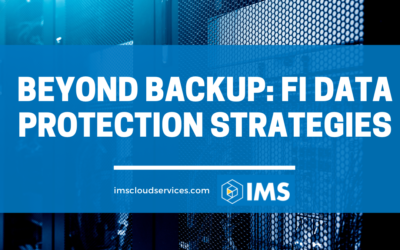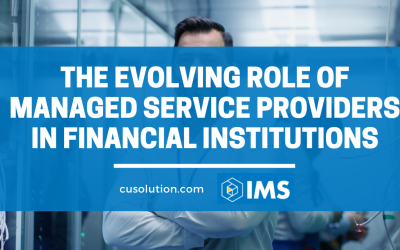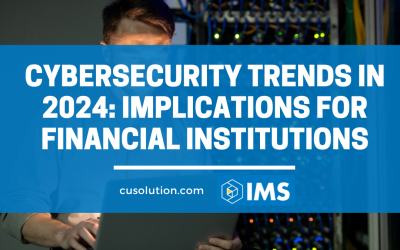Credit unions are no stranger to the physics of Murphy’s law. If something can go wrong, it will. In an age where cybercrime is hotly discussed and natural disasters crop up when they are least expected, it’s crucial to understand the potential risks of losing data as a credit union.
Risks can be natural or manmade, across a wide spectrum—from wildfires to hackers, a comprehensive disaster recovery solution should cover a range of potential disasters. However, that solution does not need to be extremely specific. The most common errors include natural disasters, cybercrime, and human error. The specific risk you’ll need to prevent is never certain—that’s why disaster recovery functions as such an important form of insurance.
A disaster recovery solution shouldn’t be bulky and expensive.
The most common solution(s) for disaster recovery purposes are typically physical locations. However, physical data storage drives up costs in the form of equipment, connections, and employees that are in charge of managing those hefty physical elements. In addition, when a physical approach is taken, multiple physical locations are used, further driving up costs.
Your customers expect excellence when they access your services through digital channels and share their valuable information with you. Those requirements translate to the safety of their data. You don’t want to lose customers since you failed to implement a solution that protected their information. 
These expectations stem from our everyday conveniences—how did you feel the last time your internet went down? Customers expect the same fluidity. When you develop a disaster recovery solution, the effectiveness of the solution should mean that customers don’t experience hiccups in their digital experience.
While you can’t prepare for a specific disaster, you can prepare for the worst.
The disaster recovery challenge is characterized by the way one responds to the breach. If a breach or disaster does occur, learn how to respond and recover from cybersecurity incidents.
If you haven’t made disaster recovery a priority for your credit union this year, you may want to consider its role in your business: financial institutions are often the target of cybercrime and natural disasters are never predictable. Plus, there are many advantages to prioritizing disaster recovery.
With disaster recovery come the following benefits:
- Minimized downtime and rapid business restoration
- Near-zero data loss with on-site backups and real-time replication
- Our secure branch communications allow immediate connections
Disaster recovery shouldn’t be a difficult term to hear, because it is more about planning than it is about the actual scenario. When the need for your disaster recovery solution to kick into place arises, you can rest easy knowing that you’ve implemented the best possible planning beforehand.
Essentially, disaster recovery plans are a form of insurance. We help to ensure that the challenges you face can be remedied smoothly and efficiently—the IMS Crash Response team is ready 24/7 to respond to any disasters. Find out more about how you can optimize your disaster recovery response.



